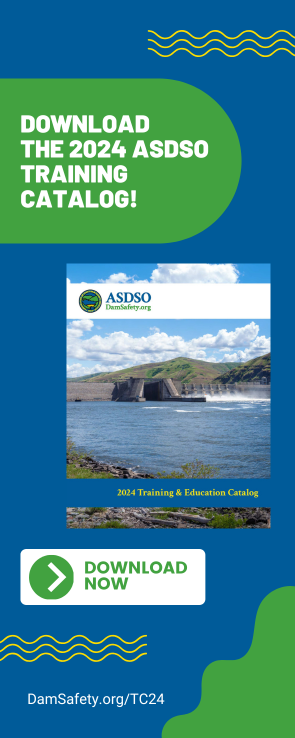
Internal Erosion – Applying Erosion Mechanics From ICOLD Bulletin 164 In Internal Erosion Failure Mode Analyses: Download
- Registration Closed
Internal erosion causes about half of all failures of water-retaining earth embankment dams. Similar statistics apply to levees. Internal erosion occurs when the hydraulic loads imposed by water seeping through the pores or flowing through cracks and openings in the soils in embankments and their foundations generate erosive forces sufficient to overcome the resistance to erosion of those soils. The knowledge of internal erosion processes has advanced significantly over the past two decades. The two volumes of ICOLD Bulletin 164 (ICOLD 2017, ICOLD, 2016) reflect the results of a group of international experts to collect information from experience, case histories, and research to provide guidance on internal erosion for engineers in dams and levees. The accumulation of knowledge led to the definition and understanding of the mechanics of the four modes of internal erosion. This understanding of internal erosion mechanics makes it possible for engineers to estimate the hydraulic load that will likely cause internal erosion to failure. The mechanics of the modes of internal erosion (mechanisms) can be combined with the internal erosion pathways through embankments and their foundations to developed detailed descriptions of potential failure modes (PFMs). If desired, these detailed PFM descriptions can be used in quantitative risk analyses. This webinar will include discussion of all of the concepts described above, with reference to how the Bulletin provides a reference to the application of these concepts in dam safety evaluations and risk analyses.
Key Takeaways:
Exposure to the international knowledge concerning internal erosion reflected in ICOLD Bulletin 164.
Understanding of the four mechanisms of internal erosion (IE).
Understanding of how IE mechanisms combine with pathways to create potential failure modes.
Improved ability to estimate IE erosion risks, both quantitatively and qualitatively.
Improved ability to identify vulnerabilities to internal erosion for existing dams and levees.
- INTERNAL EROSION AS SEEN BY ICOLD BULLETIN 164
- Introduction to ICOLD
- Need for guidance – failures, fatalities, speed of failure
- Bulletin responds to needs – new knowledge
- Mechanics of internal erosion – failures when water level high during floods
- Four internal erosion failure modes, estimating water levels causing internal erosion failure, case histories
- Contact erosion
- Concentrated leak erosion
- Crack locations
- Filter erosion boundaries approach to filtering capacity of dam fill
- Vulnerability at spillways and culverts
- Suffusion
- Backward erosion (and piping)
- Summary of four modes of erosion mechanics
- Addressing internal erosion potential in dams – before critical flood occurs
- INTERNAL EROSION FAILURE MODE ANALYSES & RISK ASSESSMENT
- Examples of potential failure routes
- Events where subjective assessments necessary
- How using ICOLD Bulletin 164 will improve PFMA
- Probability estimation for risk analysis
- Probability estimated from critical flood level from ICOLD 164 internal erosion analyses
- Some examples of internal erosion risk assessment
- SUMMARY & RECOMMENDATIONS


